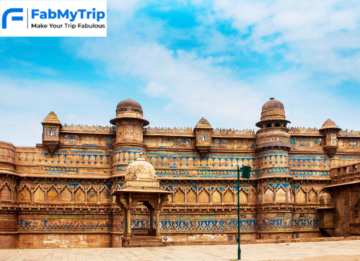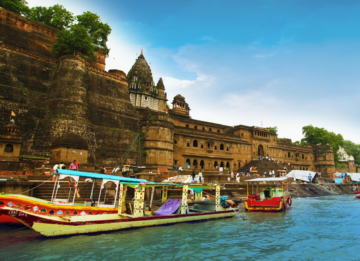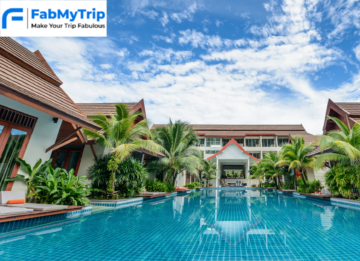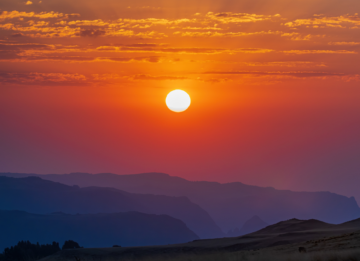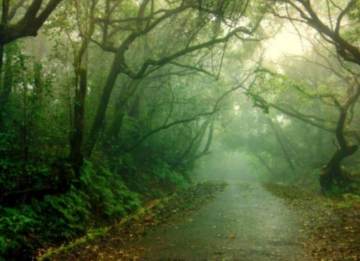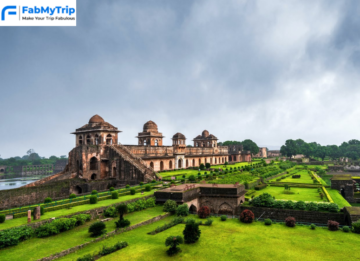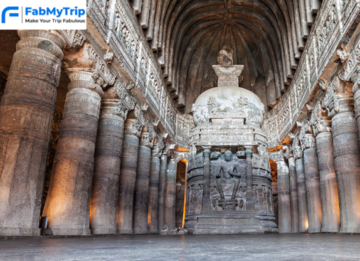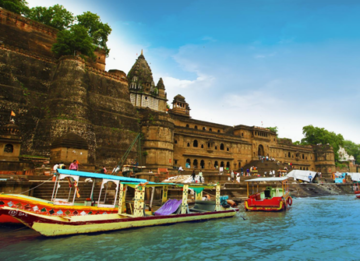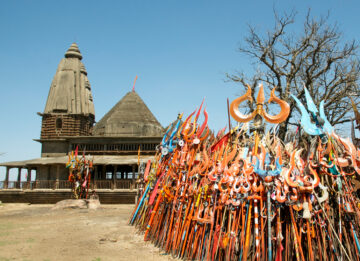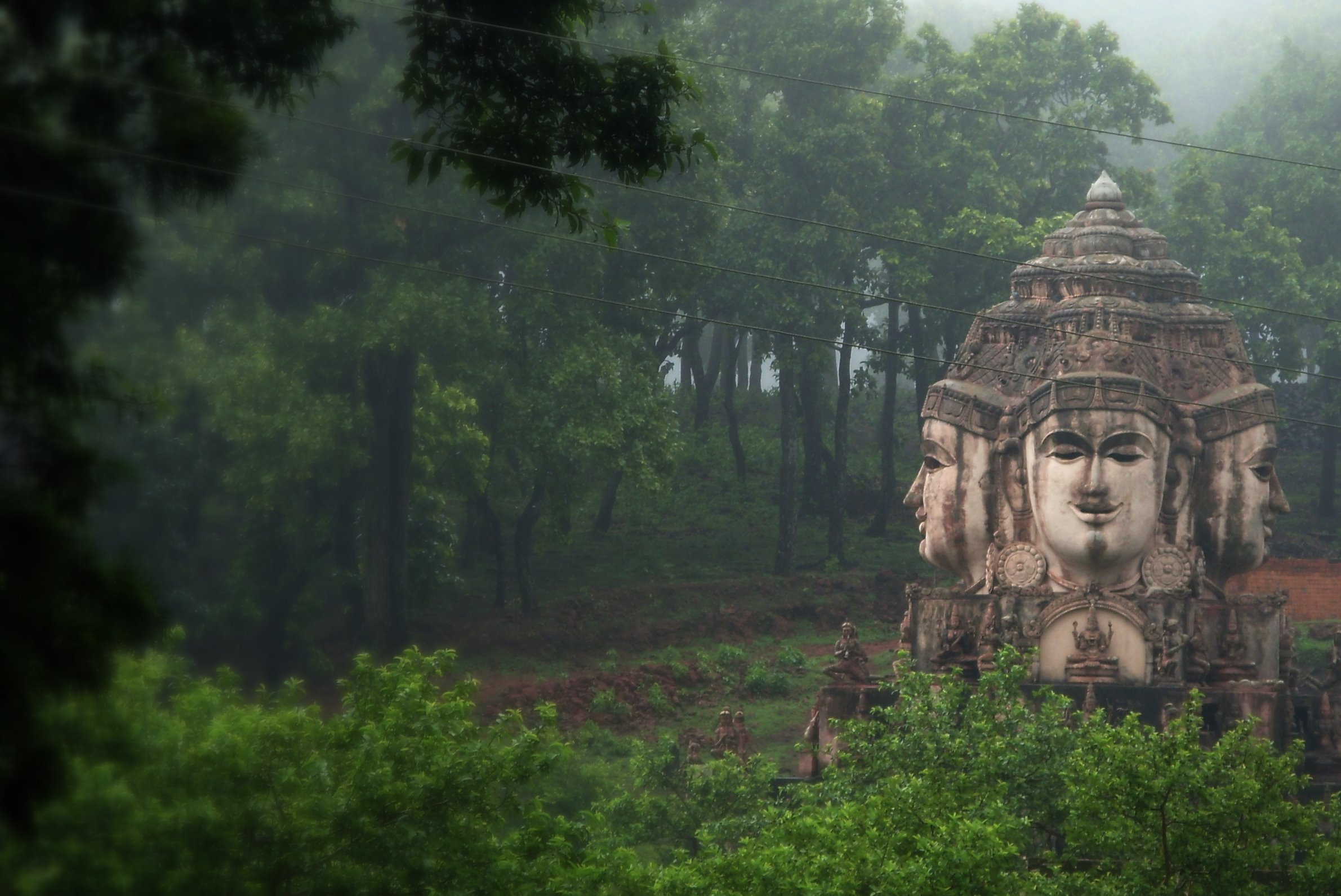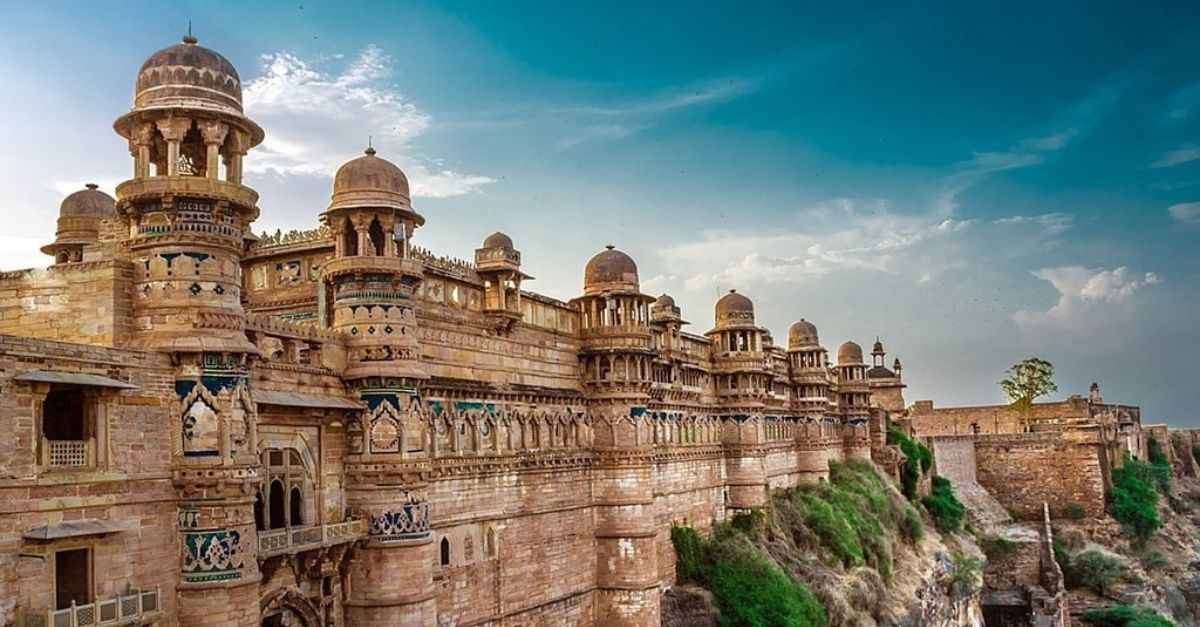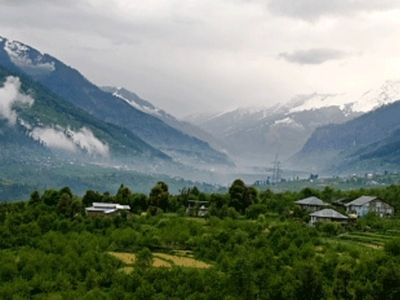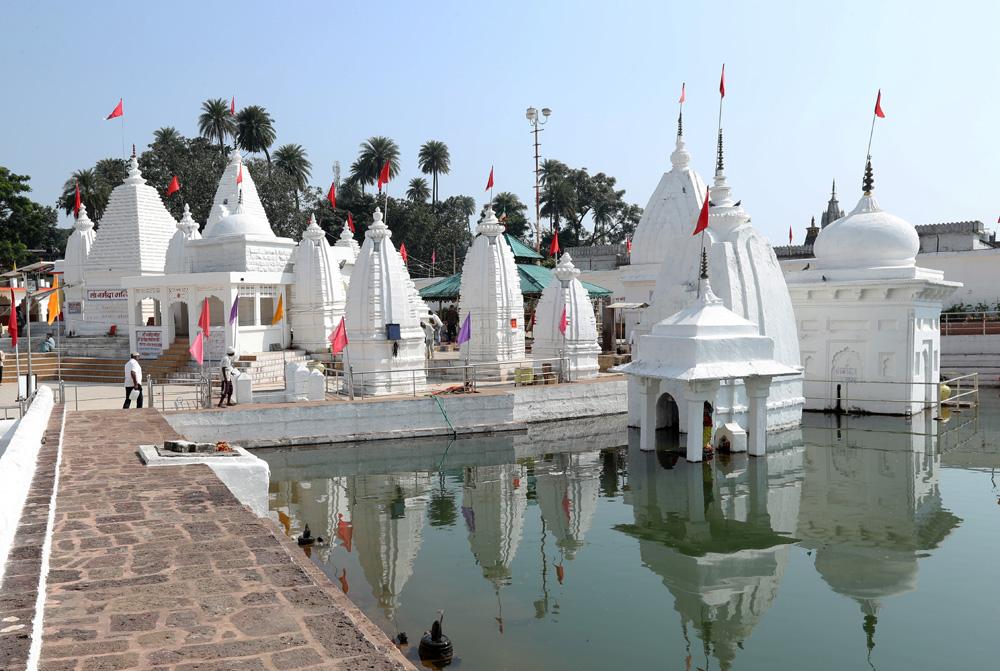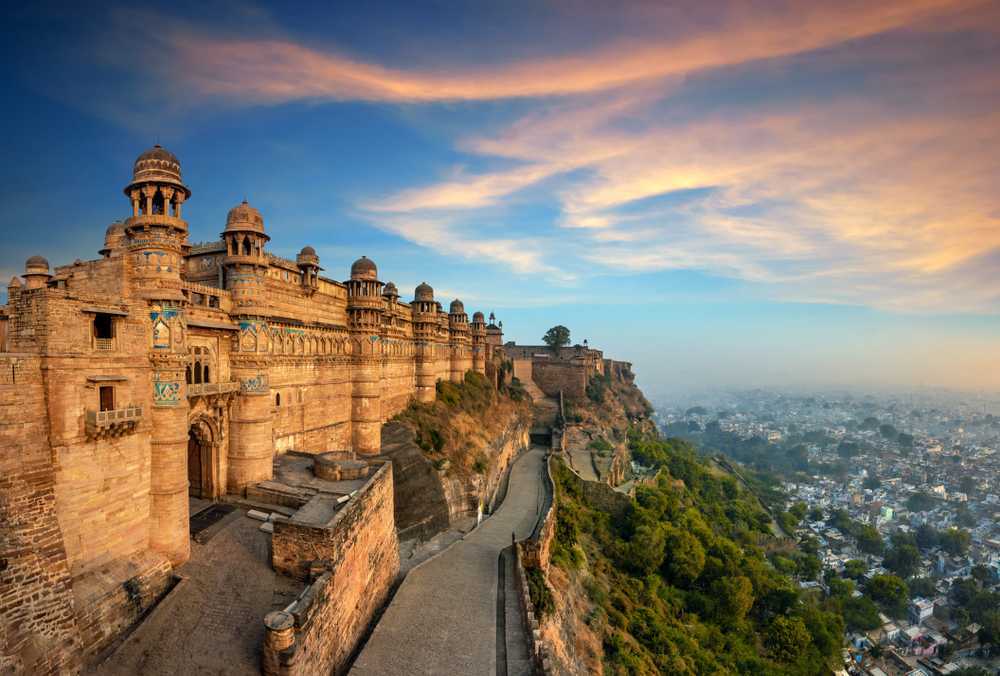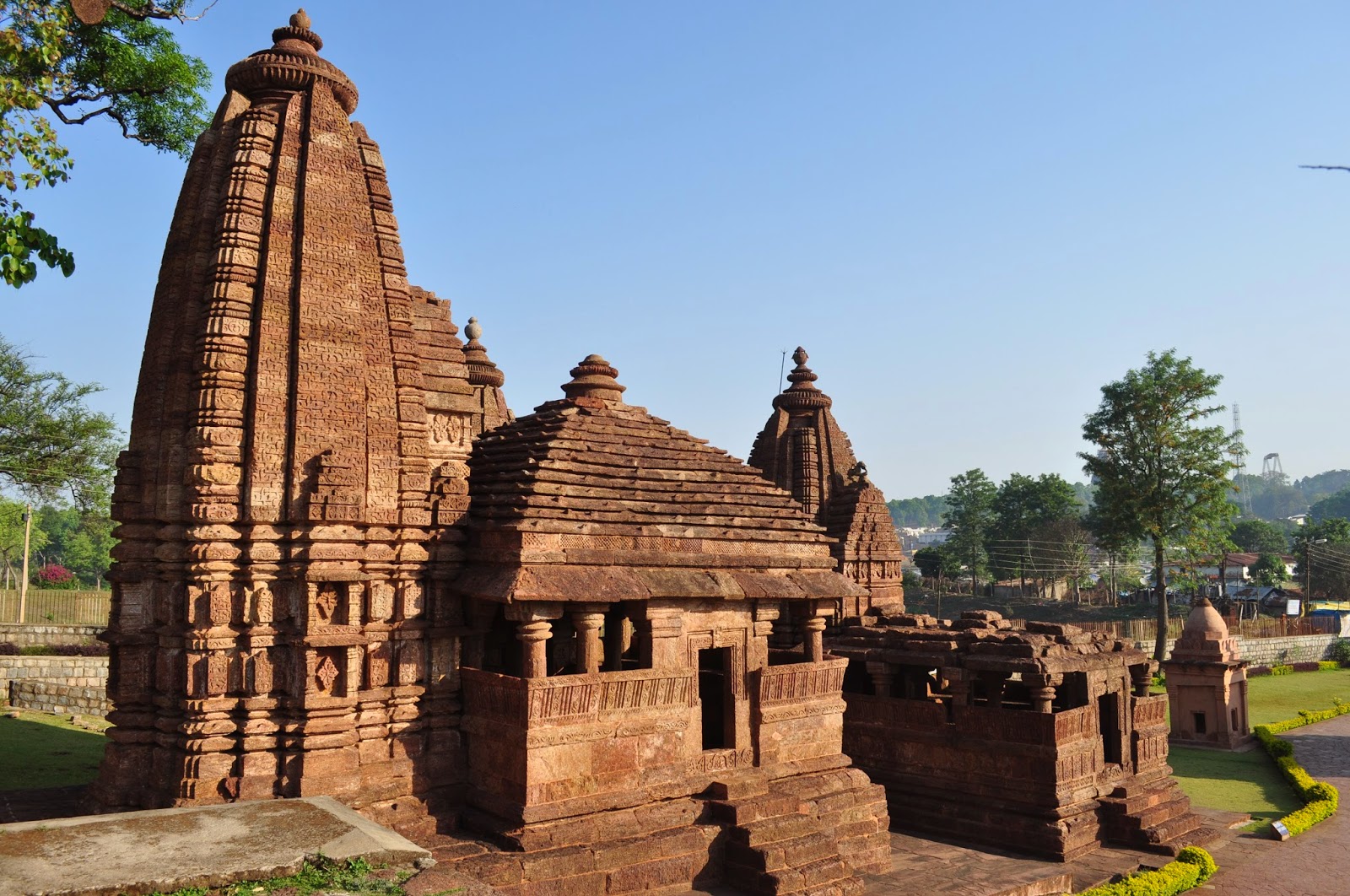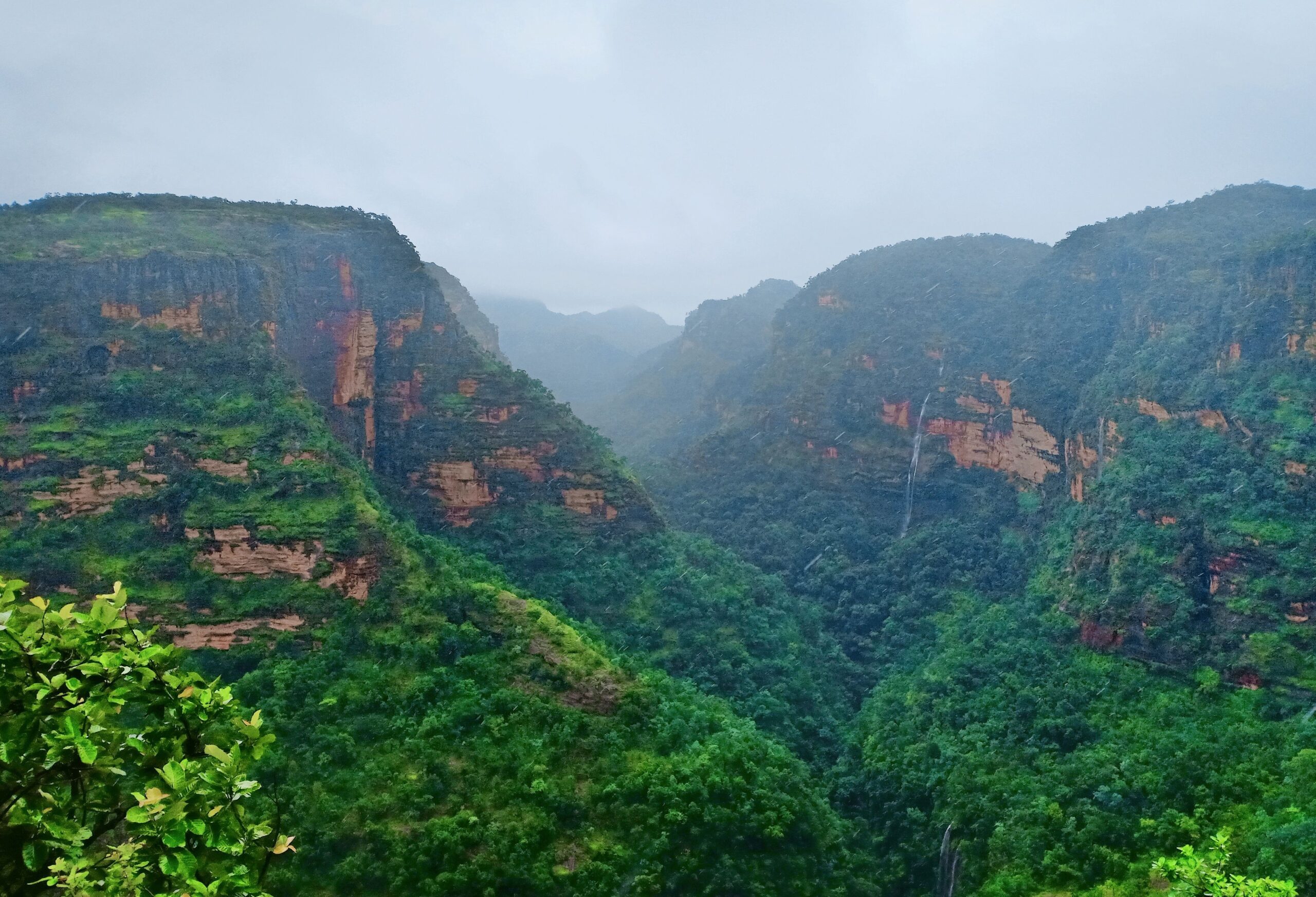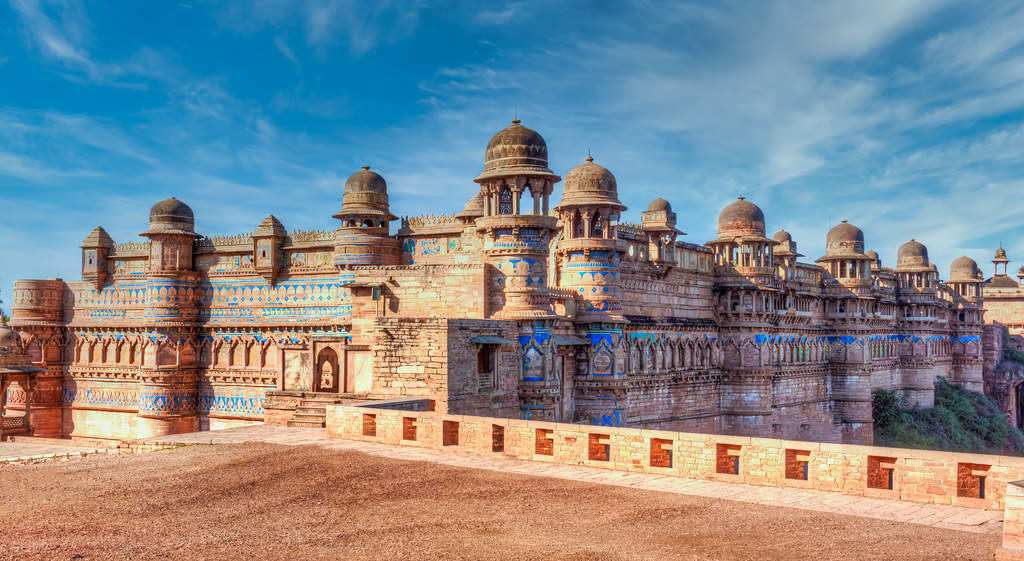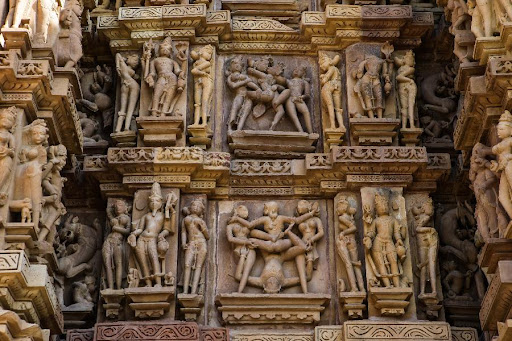
Being the “Heart of Incredible India”, Madhya Pradesh is the home to cultural and spiritual heritage of most of the religions. Famous for its history, natural beauty, forts, stupas, monuments and many temples, Madhya Pradesh attracts almost every traveler who is looking for adventure, spiritual, historical, rural, culture and more.
Visiting temples helps to calm the inner feelings and have blessings of the God. But do you know the historical significance of the temples? About the stories behind? If no, then we are here with 25 must see temples in Madhya Pradesh that are worth a visit to witness the magical structures and to know their stories behind.
MAHAKALESHWAR JYOTIRLINGA, UJJAIN
The Mahakaleshwar is one of the twelve Jyotirlingas and one of the temples in Madhya Pradesh dedicated to Lord Shiva. The temple is situated on the banks of Rudrasagar Lake, Ujjain. According to the mythology, Lord Shiva after killing a demon called Dushana, who used to torture people of the Ujjain city, took form of Jyotirlinga. The most celebrated festivals are Maha Shivratri, Sawan and Nag Panchami. The uniqueness of the temple is the Lingam faces South and has Shree Yantra inscribed on the ceiling above the Garbhagriha. Also, the main highlight of the temple is Bhasm-Aarti, performed every morning, during which the lingam is bathed with ash from fresh funeral pyre.
BADA GANESH KA MANDIR, UJJAIN
Bade Ganesh Ka Mandir is another must visit temple famous for the size and heavily decorated idol of Lord Ganesha located near the Mahakaleshwar temple in Ujjain. The idol is made up of bricks, lime and sand. Jaggery and fenugreek were also used in making of the statue. The idol is 18 feet high and 10 feet wide. The temple also holds Pancha-mukhi Hanuman (five faced Hanuman) and idol of baby Krishna in the arms of his mother Yashodhara. According to some beliefs, wishes are fulfilled in no time at this temple.
BHAIRAV PARVAT, UJJAIN
Among 51 Shakti peethas of Goddess Durga, Bhairav Parvat is also one. The temple is located on the banks of river Shipra on top of Bhairav hills. The temple is home for the upper lip of Goddess Sati as it fell to the ground when Lord shiva was carrying the corpse of his wife. The local devotees recognise it as Garhkalika. The temple is built of unique stones having different colours and an idol is always kept in a red cloth.
SHRI DWARKA GOPAL MANDIR, UJJAIN
The temple is sacred to Lord Krishna. Built during 1848-56, it is dedicated to Dwarkadheesh, deity of Scindica family. Furthermore, the architecture of the temple is designed by the skills of Maratha. The temple features a 2 feet silver idol of Lord Krishna.
KAL BHAIRAV TEMPLE, UJJAIN
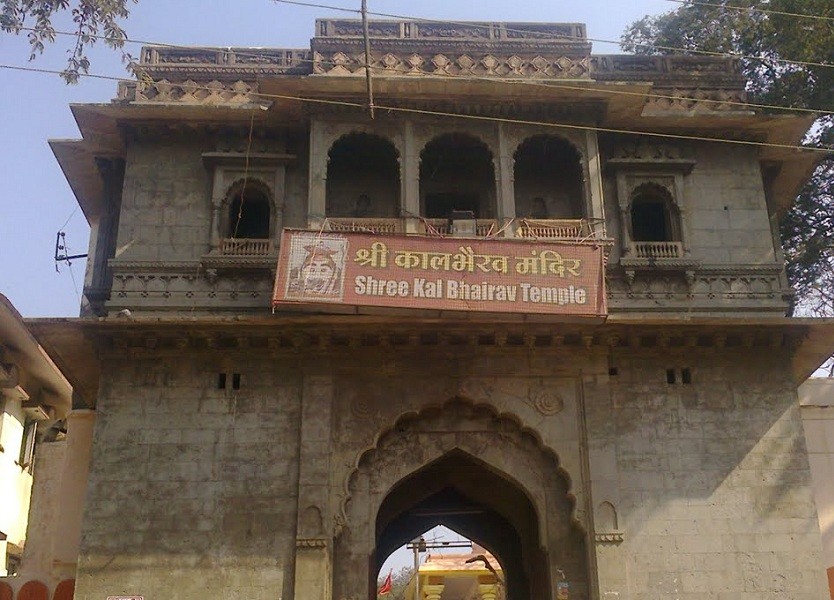
The Kal Bhairav temple is located on the banks of river Shipra in the city of Ujjain. The temple is sacred to the guardian of the city, also an incarnation of Lord Shiva. Temple was initially built by King Bhadrasen. Later it was rebuilt by Mahadaji, a maratha King to commemorate his victory in the third battle of Panipat. The uniqueness of the temple is the liquor offered to the deity. The priest opens the liquor bottle and pours it into a saucer and holds it to the mouth of the idol and the liquor starts decreasing. About one-third of the liquor is returned to devotees as prasad.
CHINTAMAN GANESH TEMPLE, UJJAIN

The Chintaman Ganesh temple is the biggest temple of Lord Ganesha located across the Kshipra river in the Ujjain. It is the town which dates back to 11th or 12th century. The idol in this temple is said to be Swayambhu (self manifested) locally referred as Chintaman. The deity is said to be the remover of all worries and tensions. Also, the temple is known for its architectural aspects and intricate designing on the walls. The image of Lord Ganesha is flanked by the idols of his wives Ridhi and Sidhi.
HARISIDDHI TEMPLE
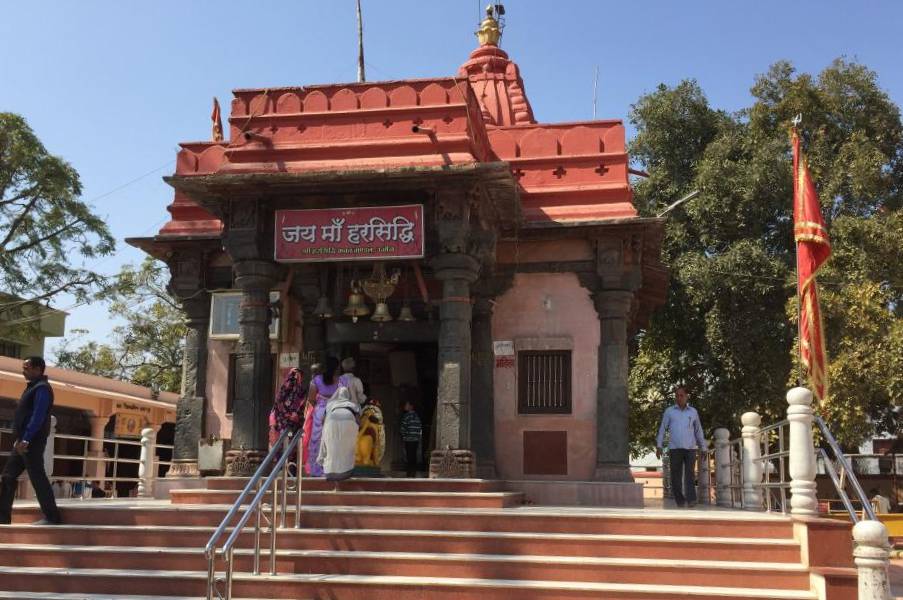
Harsiddhi temple is where the elbow of Goddess Sati fell on the ground. The temple was built by king Vikramaditya, who used to worship her daily. It is said that king Vikramaditya was the one who not only invited the Harsiddhi Mata to Ujjain but also worships her daily. Hence, the Goddess is also known as Vahanvati Mata. Inside the sanctum, the vermilion coloured idol of Annapurna is seated between Goddess Mahalakshmi and Mahasaraswati. Also nine triangles represent nine names of goddess Durga. The special feature of the temple is that the lamp has been burning for ages. Best time to visit the temple is on Dussehra.
OMKARESHWAR TEMPLE, OMKARESHWAR
Omkareshwar is known not only for its pilgrimage centre and Jyothirlanga’s, but also it is one of the famous temples in Madhya Pradesh. It is dedicated to Lord Shiva that represents one part of the fourth Jyotirlinga, located on the banks of river Narmada. The temple is located on Omkareshwar island which is in the shape of ‘OM’. Equally important to know, in this temple one can touch and do the rituals to the Jyotirlinga. The temple sanctum also consists of a bed and a palna, which has a belief that Lord shiva sleeps on that at night. Main highlight of the temple is Shayan Aarti, which takes place around 8 in the evening. The island is 4km long and can be reached by boats and bridge.
MAMLESHWAR TEMPLE, OMKARESHWAR

The Mamleshwar or Amareshwar temple is located right opposite to the Omkareshwar temple on the south bank of Narmada river. The temple is famous for its rich history and architecture style as the inscriptions of Mahimna Strotras were written on walls and its history dates back to 1063 AD. Once devotees and their counterpart can perform the Abhishek on the lingam. In the reign of Maharani Ahilyabai Holkar, 22 brahmins performed the rituals on a daily basis. However, at the present day the number of Brahmins has been reduced to 5. Around 1000 Shiva lingas are planted on a wooden board to perform the daily rituals.
GAURI SOMNATH MANDIR, OMKARESHWAR
The Gauri Somnath Mandir is one of the famous temples in Madhya Pradesh built in 11th century AD, where the Shiva linga stands 6 feet tall and made of black stone with shiny black texture. There is a saying that ‘one can see the figure of his next life in the Shiva linga, which is assumed to have predictive qualities’. The temple has a statue of Nandi and Goddess Parvati behind the linga. The structure and architectural style of the temple have resemblance to the Khajuraho temples. The temple was once ruined by Mughal emperor Aurangazeb, he saw an animal back at him, thus he tried to burn the lingam in rage and the temple lost its colour and prediction powers.
KANDARIYA MAHADEO TEMPLE KHAJURAHO
The Khajuraho group of Monuments are a group of Hindu and Jain temples in Madhya Pardesh listed as UNESCO World Heritage Sites. It is spread across 20 square kilometers. These temples were built between 885 AD and 1050 AD by the Chandela dynasty. They are famous not only for Nagar style of architecture but also for their erotic sculptures. There were about 85 temples in the 12th century and only about 25 temples have survived over 6 square kilometers. Kandariya Mahadeo temple is one of the surviving temples known for its sculptures with intricate details and expressiveness of ancient Indian art. Also, the Kandariya Mahadev temple means ‘The great God of the cave’. The temple has strong angular forms and dark-light patterns. Around 800 sculptures cover the temple depiciting God and Goddess, beasts, warriors, dancers, musicians and course the erotic sculptures.
ADINATH TEMPLE, KHAJURAHO
The Adinath temple is dedicated to the Jain Tirthankara Adinatha, founder of Jainism. The statue of Lord Adinath is of basalt and dates back to 11 century CE. The temple is located in the eastern part of Khajuraho monuments. The temple features sculptures of women, vyalas (mythical lion-like beings), and a dancer with musicians. They also feature carvings of Hindu deities. The temple has been classified as a Monument of National importance by the Archaeological Survey of India.
LAKSHMANA TEMPLE, KHAJURAHO
Lakshmana Temple is dedicated to the Lord Vishu located in the western temple complex. The temple is said to be built in the 10th century by Yashovarman. The temple structure is similar to Kandariya Mahadev temple but has unique features. Its sanctum is designed according to the Pancharatha. Sanctum doorway is of seven sakhas and contains four armed sculptures of Lord Vishnu. The unique features of the temple makes it one of the must visit temples in Madhya Pradesh.
MATANGESHWAR TEMPLE, KHAJURAHO
The Matangeshwar temple is the only Hindu temple that is still actively visited and worshiped everyday. Around Shivaratri in the month of February or March, a ceremony is organized to celebrate Lord Shiva’s marriage and is attended by 25,000 people. The Matangeshwar temple has a plain look among the Khajuraho temples and it has richly decorated interior and exterior. The Lingam in the temple is 18 feet tall, 9 feet below and 9 feet above the surface.
JAVARI TEMPLE, KHAJURAHO

Located in the eastern part of the khajuraho monuments, Javari temple was built between 975 AD and 1100 AD. Jarvari temple is small in size and famous for its ancient architecture. The exteriors are decorated with complicated carvings and sanctum. Mandapa, portico can be visible in the interiors. The Vamana temple is visible from the Javari temple.
CHATURBHUJ TEMPLE, ORCHHA

Located at Orchha, Chaturbhuj temple is dedicated to Lord Vishnu. Chatur refers to ‘four’ and bhuj means ‘arms’ which translates as ‘one who has four arms’. It is said that the temple was first built to worship Lord Rama but later Lord Vishu idol was placed due to the name of the temple. The idol of Lord Rama is currently in Ram Raja Temple. The temple has tall spires in the shape of pine cones. The overall height of the temple is 105 meters high. To reach the temple, travellers will have to take flight steps to reach the main worship place.
BHARAT MILAP MANDIR, CHITRAKOOT

The Bharat Milap Temple is the place where Lord Bharat is believed to have met Lord Rama and persuaded him to return to Ayodhya. According to the mythological epic Ramayan, due to the emotions generated by the meeting the rocks and other nearby objects said to have melted. Thus the footprints of the brothers are imprinted on the rocks and still can be seen. In the months of October to November, the fair is organised in the temple and reenacts the meeting of the two brothers.
SATI ANASUYA TEMPLE, CHITRAKOOT
The Sati Anasuya temple at Chitrakoot is a famous ancient temple surrounded by hills and considered as a part of Chitrakoot Char Dham. During the exile with Lord Rama, Goddess Sita visited their ashram and sought her blessings due to her devout and pure character. Then, Sati Anusuya explained the importance of satitva. The temple was dedicated to Mahasati Anasuya along with her husband and son Dattatreya. There is also a statue of Lord Krishna riding the chariot with Arjuna behind him. This is one must visit the temples to respect the purest soul ever.
SHRI PASHUPATINATH TEMPLE, MANDSAUR
Pashupatinath temple is one of the famous temples in Madhya Pradesh. It is known for its Shiva ling where the lord Shiva has eight faces. The upper part of linga has four heads in a line, other four heads are carved below the line. The idol of Lord Shiva have open eyes with a third eye open on their forehead. The sculpture of the temple dates back to the 5th or 6th century based on the inscriptions referring to the site as Dashapura. The temple’s unique phenomenon is ‘Jalabhishek’, it is said that every year during monsoon the level of Shivna river rises so that it touches the holy lingam.
KALMADHAV, AMARKANTAK

The KalMahadev temple is one of the Shakti Peeth located in Amarkantak dedicated to Goddess Sati Durga. It is said that the left buttock of Goddess Sati fell here, when Lord Vishu used his sudarshan chakra to incise Maa Sati’s body. The idol is called ‘Kalmadhava’ and Lord shiva is worshipped as ‘Asitananda’. The temple is built of white stone and ponds all around the temple. The temple is located at the point where Vindhya and Satpura ranges meet.
MAIHAR DEVI TEMPLE, SATNA

The Maihar Devi temple is dedicated to Goddess Shakti situated at Satna. The temple is situated on the Trikut mountain at a height of 600 feet from ground level. Travellers have to climb around 1000 steps or hire a cable car to reach the temple. The temple is home for the jewel of Goddess Sati, that fell to the ground. The temple got its name for the same.
ANNAPURNA TEMPLE, INDORE
Goddess Annapurna is the deity of Food. This temple is located in the city of Indore and is famous for intricate carvings, four full sized statues of elephants and architecture which also resembles Meenakshi Amman Temple in Madurai. The temple also has idols of Lord Shiva, Hanuman and Kalabhairava.
CHAUSATH YOGINI TEMPLE, BHEDAGHAT
The Chausath Yogini Temple at Bhedaghat is also known as Golaki Math is one of India’s oldest temples which is located on a hilltop above the river Narmada. The temple name is derived as Chausath Yogini as it holds 64 yoginis. The uniqueness of the temple is the posture of yoginis and also they look similar. It is a circular structure with an open courtyard and amazing architecture.
BIJASAN MATA TEMPLE, SALKANPUR
The Bijasan Mata Temple is considered as one of the holiest temples for Hindus. It is located on a hilltop in the village of Salkanpur. The temple is one of the incarnations of the Hindu Goddess Maa Durga. In fact, this temple is said to be built in 1920 and it is famous for its distinct style of architecture. One has to take around 1400 steps to reach the main temple. Most celebrated festival is Navaratri.
LAKSHMI NARAYAN TEMPLE, BHOPAL
This is again one of the must visit temples in Madhya Pradesh. It is built to honor Goddess Lakshmi, deity of wealth and Lord Vishnu, deity of universe. Other idols such as Lord Shiva and Lord Parvati are also found in the temple. This temple is located on hilly areas of Bhopal surrounded by lawns. In fact, the temple is built by famous industrialists the Birlas. The temple is a must visit as it holds a magnificent charm till the date.
Suggested Read- https://www.fabmytrip.com/blog/tourist-circuits-in-madhya-pradesh-in-2021/
